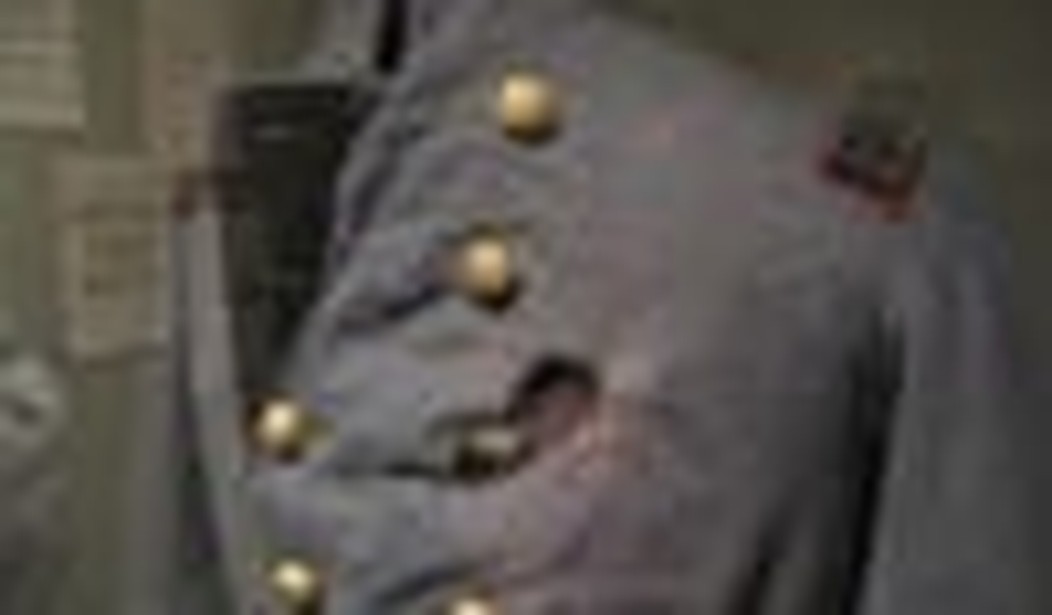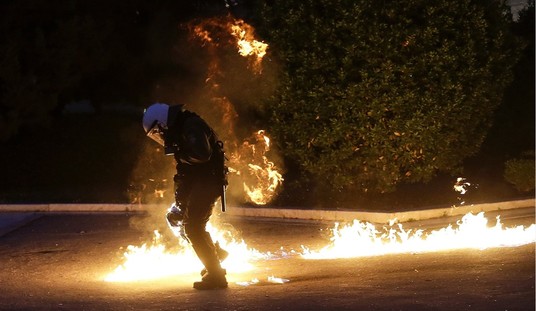Everyone familiar with American politics knows about the “bloody shirt” — that durable symbol of martyrdom and outrage guaranteed to stir up the masses, or at least the party faithful, at election time. The left’s recent seizure of the Giffords shooting as an opportunity to bash the right was only the latest instance of bloody-shirt-waving.
But was there a particular garment that gave rise to the metaphor? Search the Internet using the terms “’bloody shirt’ + American politics” and you’ll get page upon page of results, most discussing the meaning of the term itself, contemporary usages, and historical incidents reaching back to the assassination of Julius Caesar. There is also reference to a speech by Benjamin Butler in the House in 1871 in which he told of a horrific incident in Mississippi in support of an anti-terrorism bill aimed at the South. But although white southerners accused Butler of “waving the bloody shirt” in order to further oppress them, Butler did not, in fact, wave a shirt or anything else (except, perhaps, his hands) during his speech.
It must be acknowledged that there was more than one famous bloody shirt in those days. When Charles Sumner of Massachusetts was brutally caned by Preston Brooks of South Carolina on the floor of the Senate in 1856, Sumner’s beating became a symbol of what abolitionists saw as the “Slaveocracy’s” depravity — and southerners charged that he later used his red-stained clothes to stir up sympathy. Northern partisans were also quick to decry incidents after the war, when northerners who went south to administer Reconstruction were sometimes flogged or otherwise assaulted by southerners accusing them of “carpet-bagging.”
Nevertheless, a strong argument can be made that there was a bloody shirt — the uniform tunic worn by the young Col. Elmer E. Ellsworth on the morning of his shocking death on May 24, 1861.
Ellsworth, a Union colonel of volunteers and close friend of Abraham Lincoln, had just seized a large rebel flag from the top of the Marshall House, an inn in Alexandria, Va. The inn’s owner, James Jackson, met Ellsworth as he was coming down the stairs from the roof, holding the flag that Jackson had hoisted as an insult to Lincoln, who could see it from the White House. Jackson was holding something, too: a loaded shotgun. He blasted Ellsworth in the chest at point-blank range. Jackson was killed in turn by a soldier.
Ellsworth had become famous within the last year of his life as the nation’s top practitioner of the impressive “Zouave” style of French military drill. If that seems an odd basis for fame now, it didn’t in 1860, when northern governors were very much aware that the nation was heading toward war and that their small, ill-organized state militias would soon become the backbone of the Union army.
Ellsworth had organized a drill troupe in Chicago that had toured the North to tremendous acclaim. In doing so, he had come into contact with an ambitious Illinois politician who recognized the much younger man’s extraordinary motivational talents. Lincoln brought Ellsworth, then 23, into his law firm as an apprentice, but he also used him as a campaign speaker in the 1860 election. By the time war between the states became inevitable — after the surrender of Fort Sumter on April 13, 1861, and the secession of Virginia soon thereafter — Ellsworth had raised a regiment of rowdy New York City firemen (the 11th New York, known as the “Fire Zouaves”). He and they arrived in Washington about three weeks before the action in Alexandria.
His death at the hands of a secessionist touched off a firestorm of patriotic feeling that made anemic Northern recruitment suddenly robust. In fact, an entire regiment enlisted under the banner of “Ellsworth’s Avengers,” and the cry “Remember Ellsworth!” sounded across many of the war’s early battlefields. Elmer even became a popular boy’s name.
Of all the candidate garments, only one — Ellsworth’s tunic (no longer bloody after having been dry-cleaned in preparation for a Civil War centennial exhibit in 1961, but still as holey as it became on that fateful morning a century earlier) — was preserved at the time and still exists now. In fact, it’s on exhibit at the New York State Military History Museum in Saratoga Springs, not far from Ellsworth’s birthplace in Malta, NY.
Does that prove that it’s the actual “bloody shirt” of American politics? No — but it does suggest there’s no better claimant to that title.









Join the conversation as a VIP Member